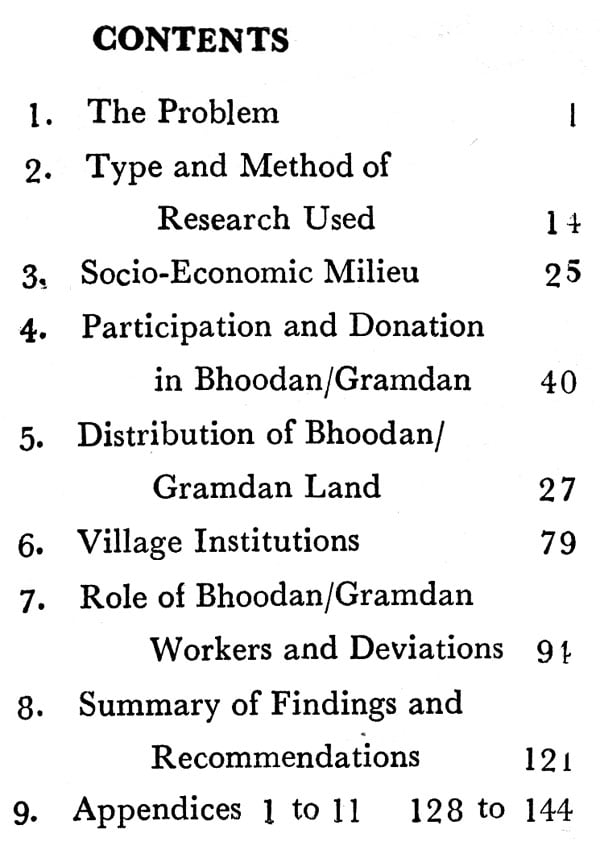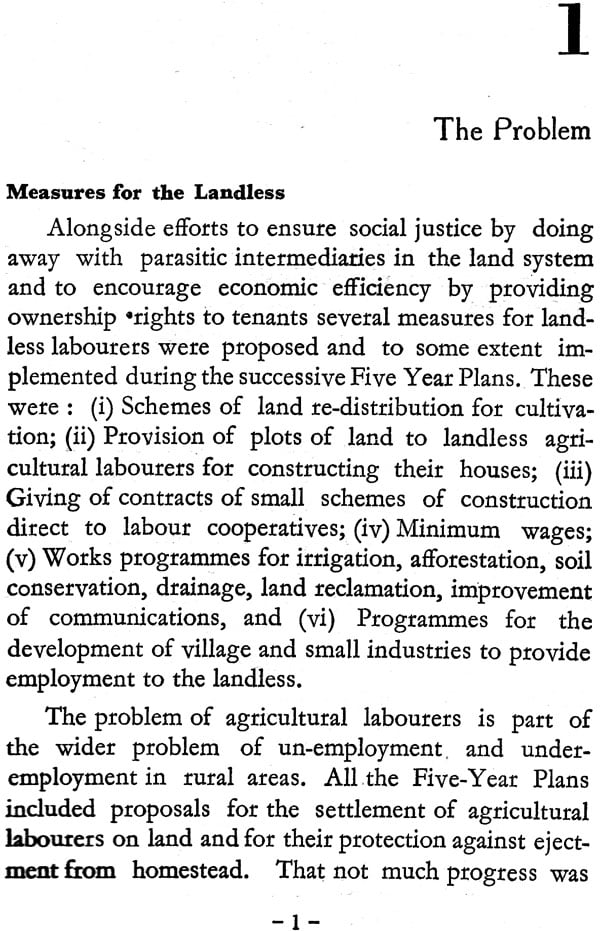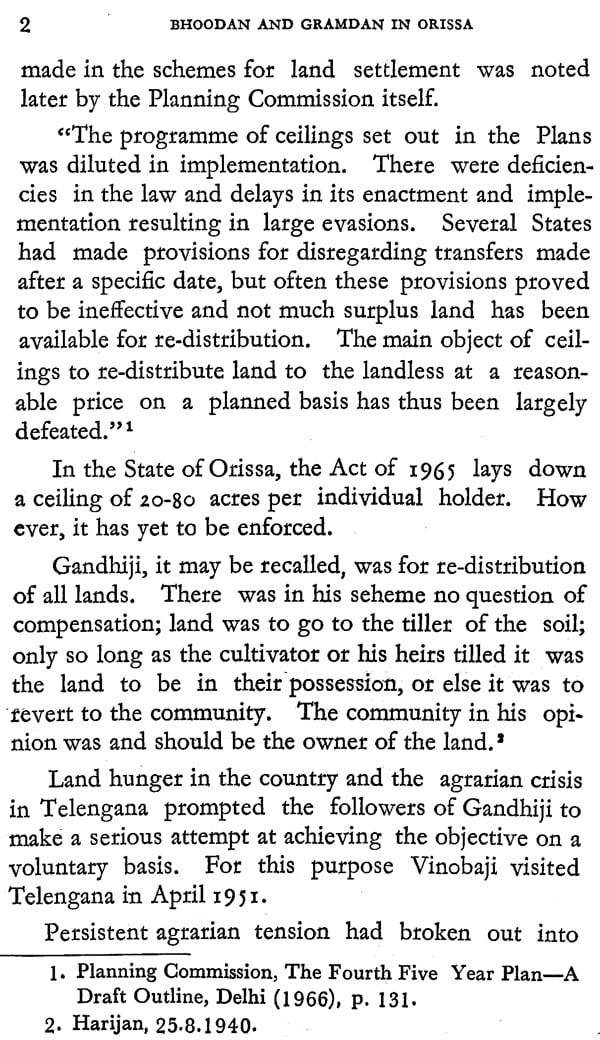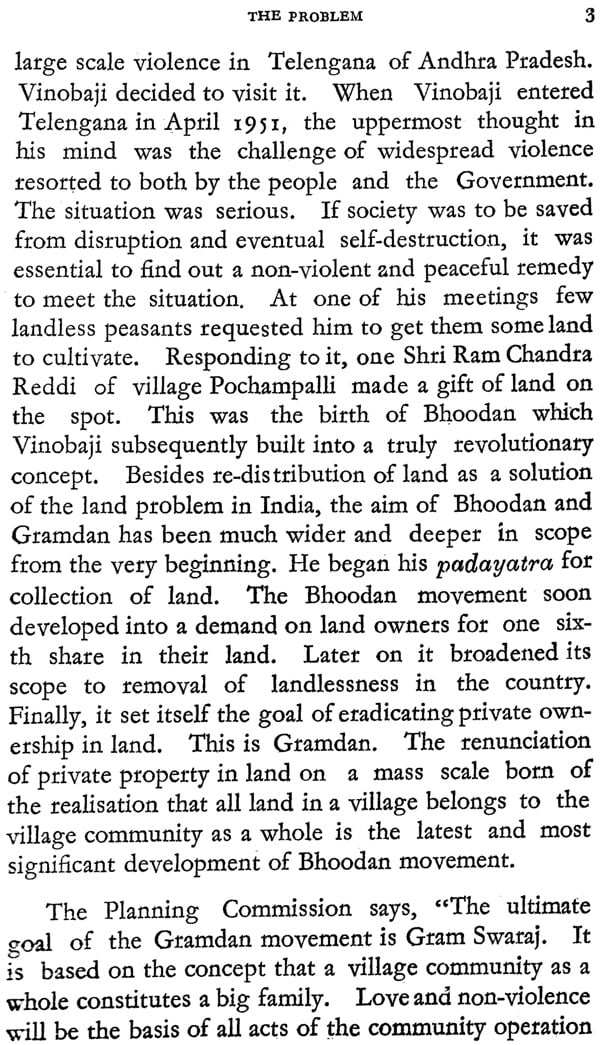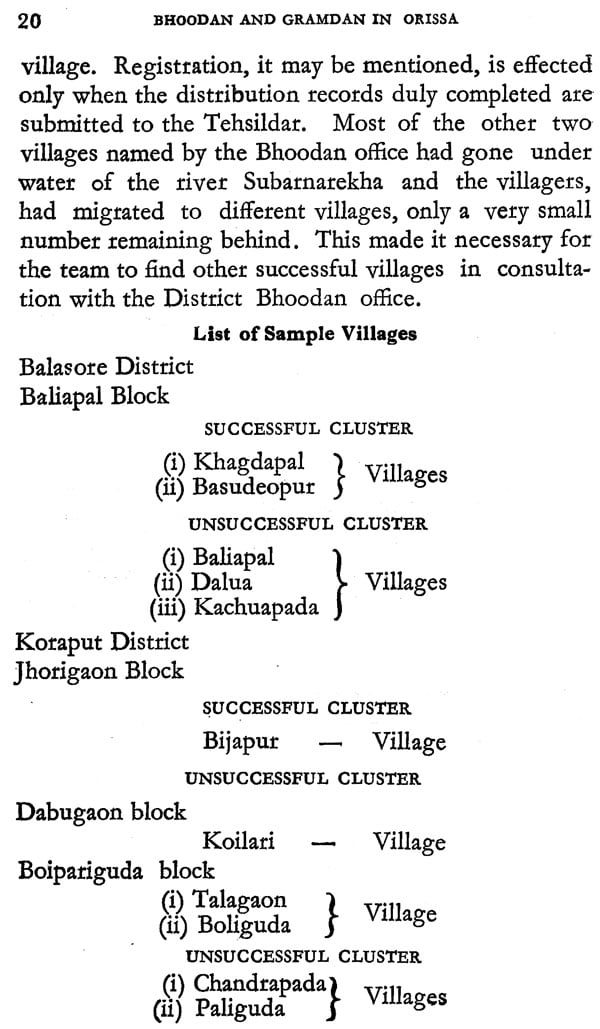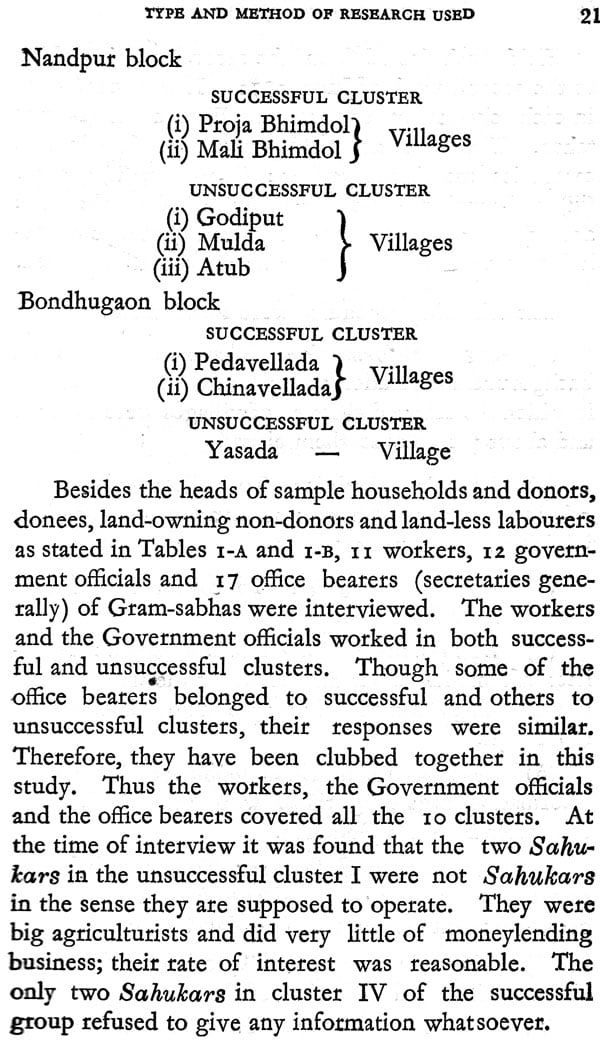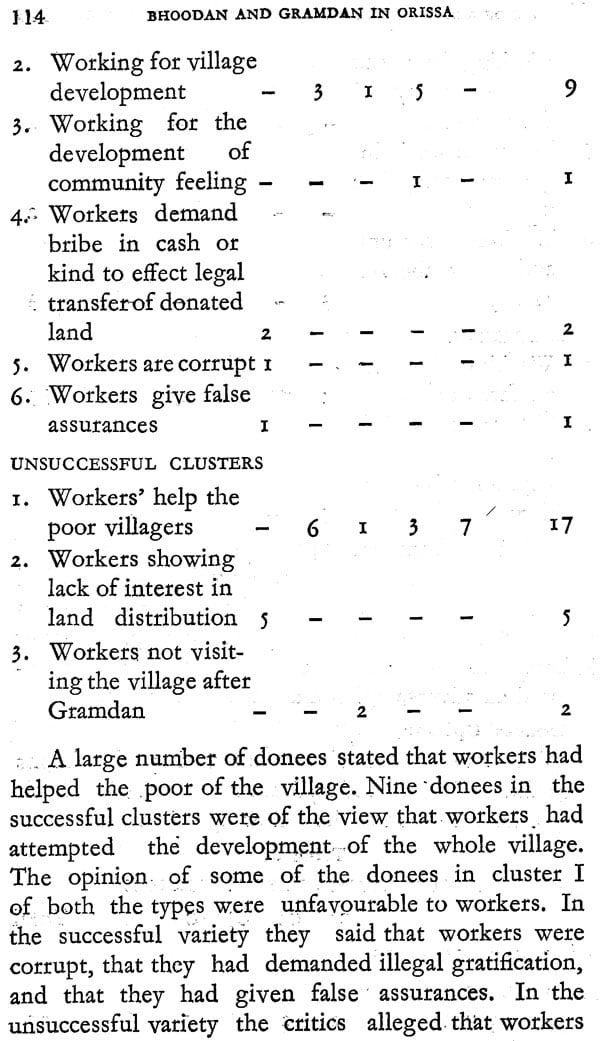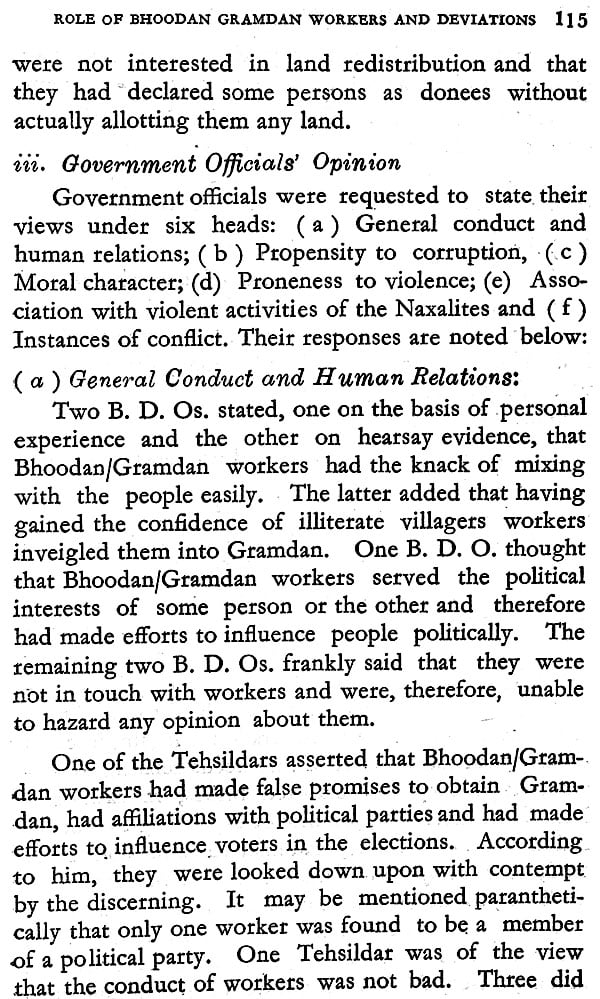
Bhoodan and Gramdan in Orissa-An Analytical Study (An Old and Rare Book)
Book Specification
| Item Code: | NAV402 |
| Author: | T.P. Singh |
| Publisher: | Sarva Seva Sangh Prakashan, Varanasi |
| Language: | English |
| Pages: | 147 |
| Cover: | PAPERBACK |
| Other Details | 8.50 X 5.50 inch |
| Weight | 130 gm |
Book Description
The Gandhian movement in India faced one of its worst crisis in early 1948. Gandhi was murdered on 30th January, that year. Stalwart Congress leaders who were known as Gan-dhi's closest associates were no longer pursuing his path. They had, instead, taken over the reins of the Government. Gandhi himself, it may be recalled, did not have much faith in the establishment of the government and had grave doubts if it could at all bring in any radical change in the country. He was sure, on the other hand, that nothing short of a revolutionary transformation of the social, economic and political structure of the nation would have served the purpose. Gandhi had, there-fore, tailored many plans for ushering in such a revolution. The first was to take a trip to Pakistan in order to try again and this time with success—to change the political structure of the sub-continent. The other was to bring to fruition the aspiration of the Indian village communities by enabling them to set up six hundred thousand 'mini' republics to provide the real basis of the Indian polity. They were to be charged with the responsibility of redistribution of all land and on the basis of such fundamental structural changes to build an altogether new typology of a planning movement in India. All these radical programmes were, however, to be brought to ground not through force but through non-violence--a method by which Gandhi had already fought his first battle for colonial freedom. It was now to provide the basic methodology of the post-colonial revolution as well. The struggle for the emancipation of the Indian masses were thus to continue. Violence was to be abhorred. A radically new structure of polity and society was to emerge. At a time when Gandhi was sorting out his plans for these Herculean tasks, he was killed. The Gandhian movement, naturally, fell in a stupor. It was in doldrums.
In this period of crisis the movement suddenly found—strange but true-a new impetus. It found a new leader; it established a new organization and adopted a new programme one that was Gandhi's priority for social revolution in India, namely that of land-reforms for structural change. The leader was Vinoba Bhave, the organization was Sarva Seva Sangh and the movement, known by a new name like Julius Nyrere's 'Ujjamma', was called Sarvodaya. The programme it took to ground was known as Bhoodan-Gramdan. The immediate task of the Bhoodan Gramdan movement were, to say the least, the redistribution of land among the land-less, the fulfilment of the spirit of land reform 'acts' and the establishment of a single institutional entity to which all people of a village, irrespective of their class, caste, religion, rank and strata would belong. 'Bhoodan' the first phase of the movement came first. It envisaged that every landowner would part 1/6th of his land for redistribution to the landless. In May 1952 after a year's trial the Bhoodan movement was further radicalised and the new phase of 'Gramdan' came into being. The formula now was that 75% of the population of a village ( or be it of a block or of a district ) owning 51% of land of the area were to be persuaded to part with their pro-prietary rights in favour of 'legally constituted Gramsabhas ( the village council ); and 1/20th of the land of every land owner was thereafter to be available for redistribution among the landless in a manner to be decided by the Gramsabha. The decisions of the village community were to be final in all other matters of the village government as well as would entail ipsofacto transfer of all land to the Gramsabha.
A 'gram kosh' or a 'Community chest' built on the basis of subscription of the villagers e.g. the 1/40th of the income of every earner was to provide the initial capital for village or area development. Later on, the movement grew beyond the village limits. It was decided that if 75% of the population of a block and of a district owning 51% of the land had similarly agreed to sign up a new unit of decision making what has now come to be known as the 'Prakhand dan' and Ziladan units would come into being.
The movement grew in rapid strides and provided an unique, global mechanism for voluntary transfer of the means of production to the local community. All these, the transference of legal rights, the establishment of community institutions and the pooling of community resources were to be achieved without blood—shednd by means of non-violent, democratic persuasion. Socialism of a new type was thus to emerge from the roots of the rural society. The movement made rapid progress in the fifties and the sixties. More than 3,00,000 acres of land were distributed by 1969 in Bihar alone.3 In Orissa too the movement came of age. In Gunpur sub-division, in the district of Koraput, acute land hunger led to a spectacular Satyagraha in 1950 and offered a great impetus to the movement. By 1953 and 1954 workers of all political parties had joined the fray. They came forward to lend their mite to the drive for collection of land in every district of the state. Vinoba finally crossed over into Orissa on January 26, 1955 to lead the movement himself. Welcomed by the Chief Minister of the State he was presented with 1 lakh and 22000 acres of lands given away by 40,000 donors. Nintythree villages were declared as Gramdan.
**Contents and Sample Pages**
